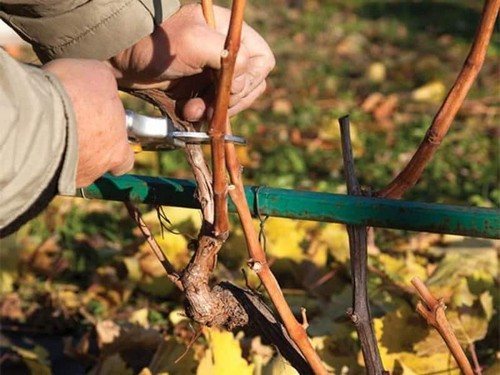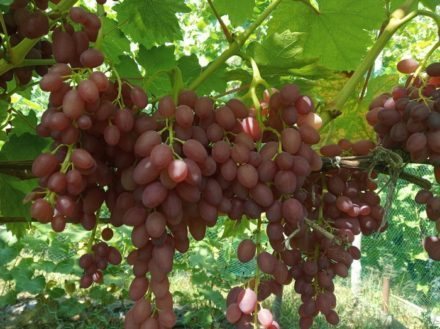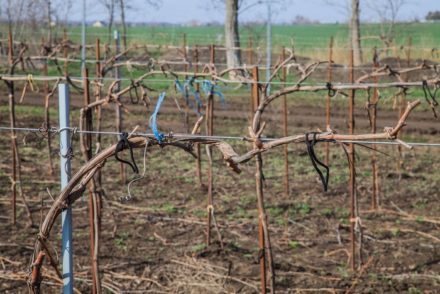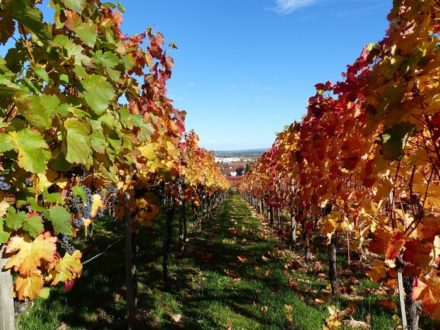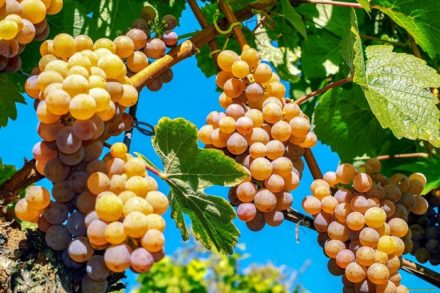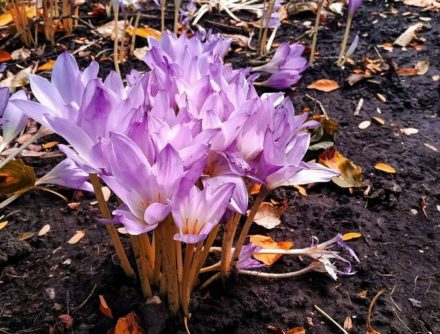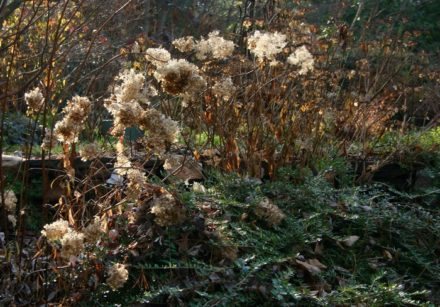When cutting grapes in autumn, the seedlings are stronger and more resistant to diseases. This is due to the fact that during the summer the vine receives a lot of sun, moisture, and nutrients. In the fall, gardeners have more free time. Harvesting cuttings can be combined with autumn pruning of shoots. A few important tips will help beginners carry out cuttings according to all the rules.
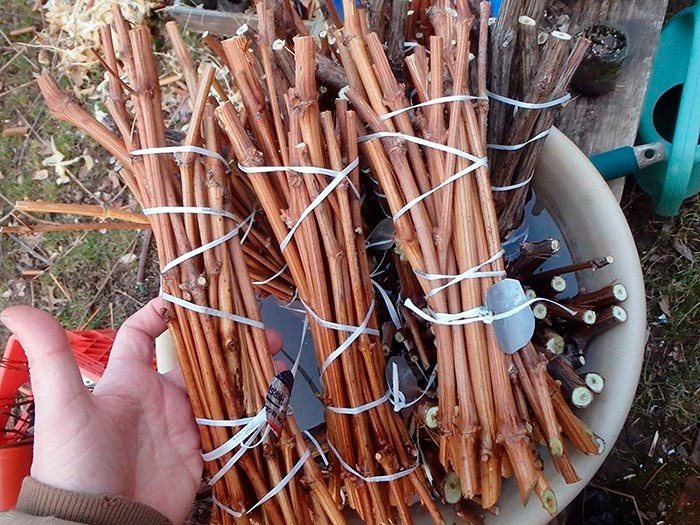
Compliance with cutting deadlines
At the time of cutting, all leaves should fly off the vine. On average, the dates are October - November. The exact date depends on the climate of the region. After leaf fall, grapes are usually prepared for winter. The vital processes of plants during this period slow down, the movement of juices is suspended, so pruning will not cause any harm to the shrub.
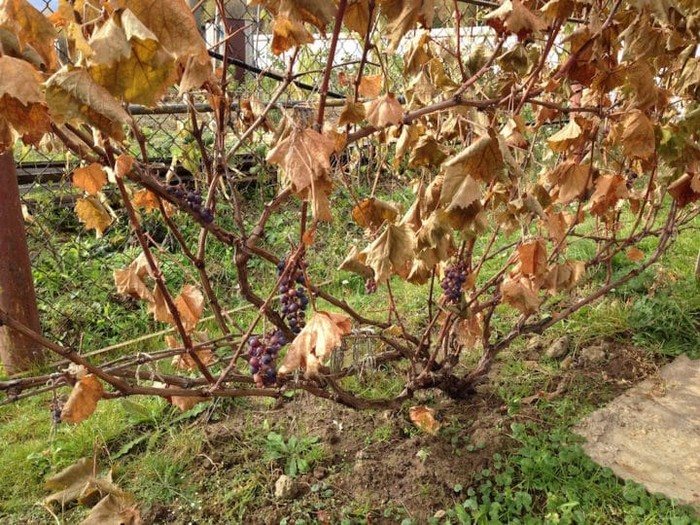
Choosing the right vine
In autumn, grapes are propagated by woody cuttings. Strong branches without signs of disease or mechanical damage are suitable as blanks. Typically, shoots for cuttings are taken from abundantly fruiting bushes. In this case, there is a high chance that young plants will produce a good harvest.
The thickness of the selected branch should be 8–10 mm. The middle part of the shoot is taken as a cutting. The harvest from the lower part may take root worse, and the top of the vine is often not mature enough.
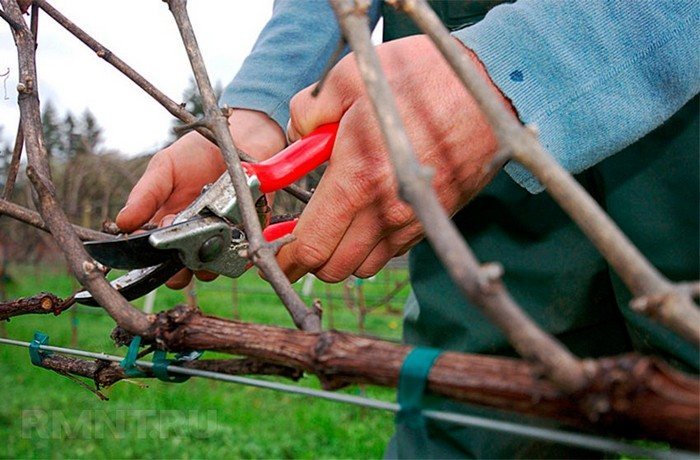
Requirements for cuttings
You can’t cut the vine at random.There are certain rules for preparing planting material. The length of each section should be 30–45 cm. Ideally, the blanks are obtained from straight branches or shoots with minimal bending.
The cuttings should be covered with light brown bark and have at least 3 buds. Leaves and tendrils are completely removed from the blanks. After cutting, the material is disinfected by soaking in a solution of potassium permanganate or iron sulfate.
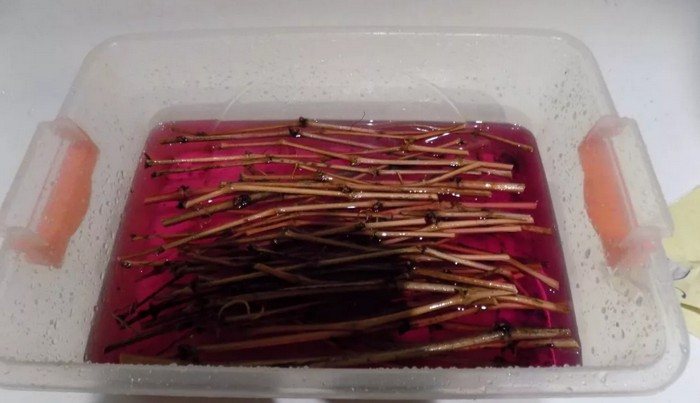
Storage conditions
The processed cuttings are collected in bunches and tied with twine. The planting material is divided by variety. Each bunch is provided with a label with the name of the variety. Until planting, the blanks should be kept in the cold. There are several ways to store them:
- In a trench 50 cm deep. For digging, choose a place that is not subject to flooding by melt and groundwater. The bottom of the pit is covered with a 10 cm layer of wet sand. The cuttings are placed on the sand cushion and sprinkled with soil. The trench is mulched with straw, sawdust or peat on top. After the frost, a film is additionally placed on top.
- In the basement. The storage must be cool. The cuttings are stored here in plastic bags with sawdust. The blanks are placed vertically in the substrate. The top of the bags is tied, leaving small gaps for ventilation. In winter, the humidity level in the bags with cuttings is checked from time to time. If necessary, the sawdust is moistened.
- In the refrigerator. This method is suitable for a small number of cuttings. The blanks are wrapped in damp newspaper and then placed in a plastic bag, providing air access. The cuttings are stored on the top shelf or in the refrigerator door.
The condition of future seedlings is periodically checked. If the cuttings become moldy, they are washed in a solution of potassium permanganate, dried and stored again.
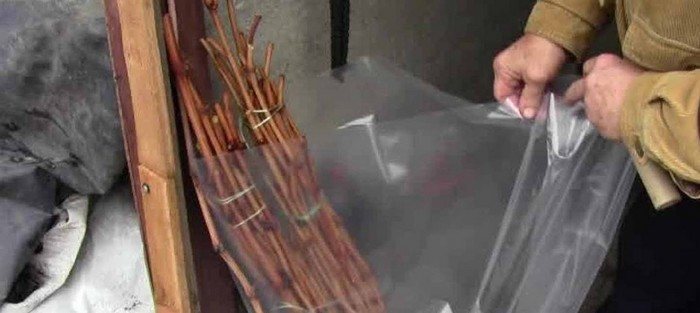
Rooting of planting material
Rooting of cuttings begins in early February. Seedlings brought from storage are briefly soaked in a solution of potassium permanganate, and then immersed in clean water for 2 days. Before planting for rooting, the cuts are renewed, making them obliquely. At the bottom of each workpiece, the bark is cut (longitudinally) with a knife, and then the cuts are processed with “Kornevin”.
You can root cuttings in soil and wet sawdust. The soil mixture is made up of equal parts of humus, sand and peat. Expanded clay drainage is placed at the bottom of the containers. The cuttings are planted at an angle, leaving 1–2 buds at the top. Beginners can root grape cuttings in water. This method allows you to monitor the appearance of roots.
Root the workpieces in boiled or filtered water, into which 1-2 tablets of activated carbon are thrown to prevent putrefactive processes from occurring during germination. Seedlings with roots are planted in disinfected fertile soil. Grapes are planted on the site in mid-May. At this point, several young leaves appear on the plants.
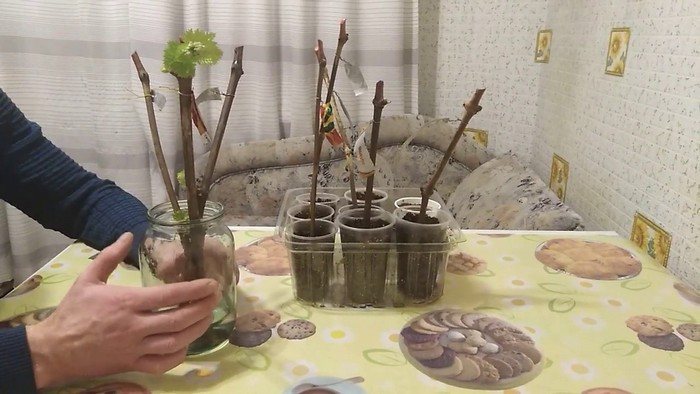
Autumn propagation of grapes by cuttings means only the preparation of grape cuttings. The planting itself takes place much later - at the end of winter. And only in May should the rooted cuttings be placed in a permanent place in open soil.In order for all stages to go smoothly, it is important to select high-quality material for the blanks, provide the branches with a cool winter and root them using the accepted technology.


